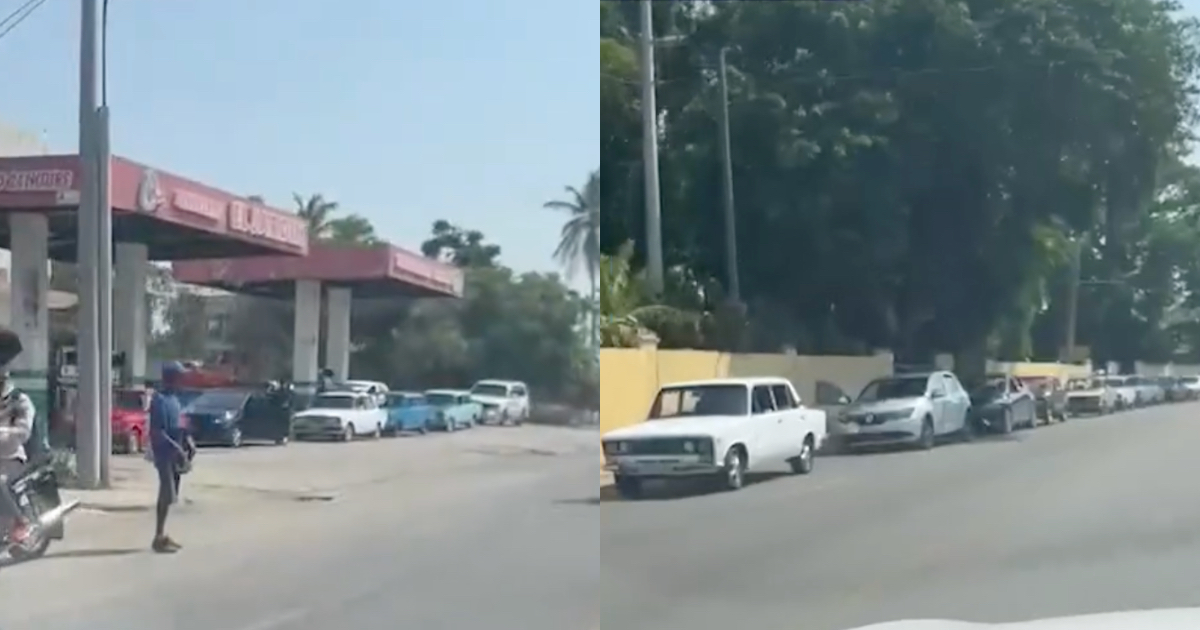Alongside rampant inflation, which has surged by 1,500% over the past six years in Cuba, long lines for purchasing fuel have become a common sight in Havana. This is not a new phenomenon for the rest of the country. According to a video published by El Toque, the capital now has extensive lines of cars stretching for blocks as they wait to fill up at gas stations. "A friend spent thirty hours waiting to refuel," noted an internet user named Carlos. "This is why the dollar cannot lose its value," added another person named Gustavo. "It's shameful," lamented Ariadna. "Nothing works well in Cuba, only repression and surveillance are effective," emphasized José.
Last March, state media boasted that a sudden 500% increase in fuel prices had eliminated lines and scalpers at service stations across Cuba. Nearly three months later, prices remain sky-high, and long lines of cars needing fuel have returned, despite a measure many citizens deemed senseless in a country with such low wages and skyrocketing poverty rates. The regime claimed the hike was to "correct distortions" that greatly concern Miguel Díaz-Canel.
Just before the price hike took effect, Cubans rushed to buy fuel, and the lines were immediate. Among those waiting was actor and comedian Otto Ortiz, who shared his ordeal on social media about refueling at a Cupet in Havana, where he found that the payment systems for bank transactions were non-functional and cash payments were not accepted.
A month after the fuel price increase, lines at gas stations spread across the country, highlighting the nationwide fuel crisis. At this point, the regime shows no signs of having control over the situation or any potential solutions.
Behind the lines, there is always a shortage. In desperation, Cubans have even created Facebook groups to help each other, such as "Dónde hay Combustible (Gasolina y Petróleo)" which, with the Cupet logo as its profile picture, announces where in the capital both products are available.
Former Economy Minister Alejandro Gil, who was dismissed and is now under judicial investigation for corruption, announced the fuel price increase on the island, asserting that oil and gasoline could no longer be subsidized by the state because, according to him, Cuba was selling the cheapest fuel in the world. Gil explained in December 2023 that they could not continue selling "subsidized" fuel because they wouldn't have the money to buy another oil tanker. "Who pays for it?" he asked. A month later, he was dismissed and began to be investigated.
Understanding Cuba's Fuel Crisis
In light of Cuba's ongoing fuel crisis, here are some frequently asked questions and their answers to provide a clearer understanding of the situation.
What caused the long lines for fuel in Cuba?
The long lines for fuel in Cuba are primarily due to a combination of rampant inflation and a significant price hike in fuel, which has led to widespread shortages and increased demand.
How much has inflation increased in Cuba over the past six years?
Inflation in Cuba has surged by a staggering 1,500% over the past six years.
What was the government's justification for the fuel price increase?
The government claimed the fuel price hike was necessary to "correct distortions" in the economy, as Cuba was allegedly selling the cheapest fuel in the world and could not afford to continue subsidizing it.
What was the public's reaction to the fuel price increase?
Many citizens considered the measure senseless, especially in a country with low wages and high poverty rates. The situation led to widespread dissatisfaction and long lines at gas stations.
